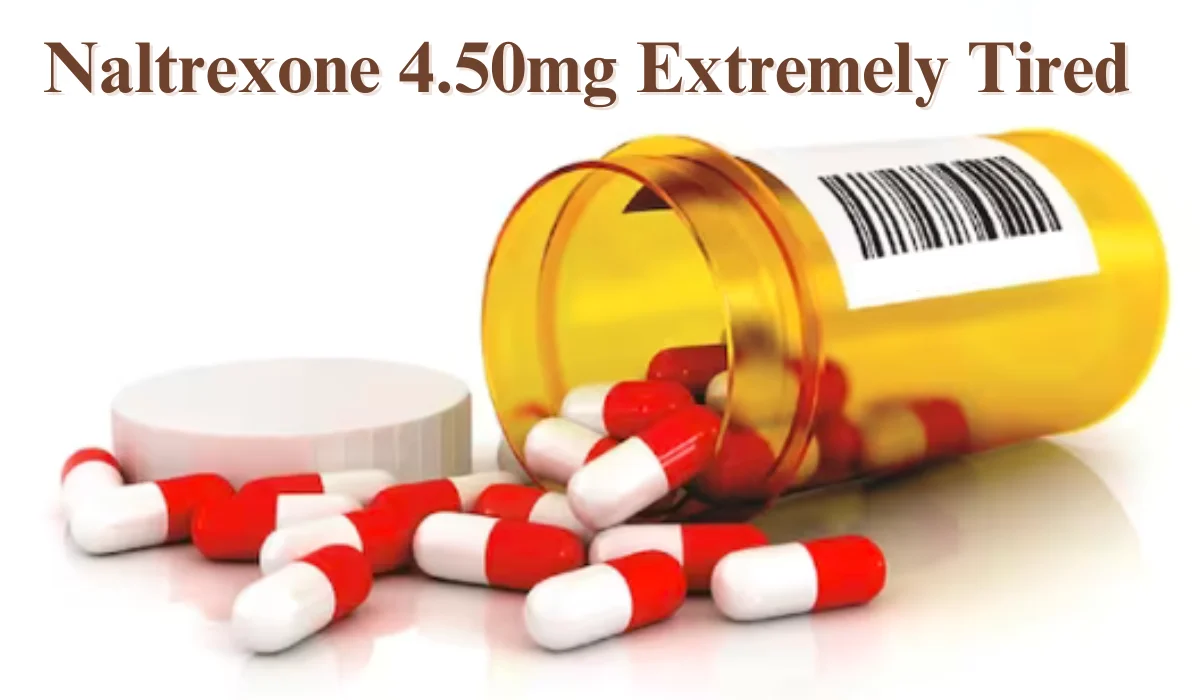Naltrexone 4.50Mg Extremely Tired is a medication primarily used to assist individuals in overcoming alcohol and opioid dependencies. By curbing cravings and blocking the euphoric effects of these substances, Naltrexone can play a crucial role in addiction recovery. However, one common concern associated with this medication is the feeling of extreme tiredness that many users report. This article aims to shed light on the relationship between Naltrexone 4.50Mg Extremely Tired and fatigue, detailing its benefits, potential drawbacks, and practical ways to manage tiredness effectively.
What is Naltrexone?
Naltrexone is an opioid antagonist, meaning it blocks the effects of opioids in the brain. It is commonly prescribed in two forms: oral tablets and injectable formulations. The oral version is typically taken in doses of 50 mg, while the lower dose of 4.50 mg may be used for specific cases, often to mitigate cravings during the early stages of recovery. By binding to the same receptors as opioids and alcohol, Naltrexone helps individuals resist the urge to use these substances.
Benefits
The benefits of Naltrexone 4.50Mg Extremely Tired are significant, particularly for those struggling with addiction. By helping to reduce cravings, it allows individuals to focus on recovery without being constantly preoccupied by the desire to drink or use drugs. Here are some of the key advantages of using Naltrexone:
- Reduced Cravings: One of the primary goals of addiction treatment is to minimize cravings. Naltrexone assists in achieving this by dampening the neurological signals that drive the desire for substances.
- Prevention of Relapse: By neutralizing the euphoric effects of alcohol and opioids, Naltrexone makes it less rewarding to indulge in these substances. This can lead to lower relapse rates and a more successful recovery journey.
- Improved Quality of Life: Many individuals find that, as their cravings decrease, they can engage more fully in their lives, rebuild relationships, and pursue new interests.
Side Effects
While Naltrexone 4.50Mg Extremely Tired offers many benefits, it also comes with a potential side effect: fatigue. Some users report feeling extremely tired, which can affect daily activities, work, and personal relationships. Understanding the reasons behind this fatigue is crucial for managing it effectively.
Fatigue Explained
Fatigue related to Naltrexone can arise from several factors:
- Body’s Adjustment: When starting any medication, the body often requires time to adjust. This adjustment period can lead to feelings of tiredness as the body recalibrates its processes.
- Impact on Sleep Patterns: Naltrexone may interfere with sleep, leading to poor sleep quality. Inadequate rest can result in significant tiredness during the day.
- Underlying Conditions: For some individuals, fatigue may be linked to underlying health conditions that can be exacerbated by medication. It’s essential to consider these factors when evaluating tiredness.
Managing Fatigue
If you’re experiencing extreme tiredness while taking Naltrexone 4.50Mg Extremely Tired, there are several strategies you can implement to help manage this side effect effectively.
Sleep Hygiene
Establishing good sleep hygiene is vital. This includes:
- Consistent Sleep Schedule: Go to bed and wake up at the same time every day to regulate your body’s internal clock.
- Create a Relaxing Environment: Make your bedroom conducive to sleep by keeping it dark, quiet, and cool.
- Limit Screen Time: Reduce exposure to screens before bed, as blue light can interfere with the body’s natural sleep cycle.
Nutrition
A balanced diet can significantly influence energy levels. Consider the following:
- Stay Hydrated: Dehydration can lead to fatigue. Aim to drink plenty of water throughout the day.
- Balanced Meals: Incorporate a mix of carbohydrates, proteins, and healthy fats into your meals. This can help maintain steady energy levels.
- Limit Caffeine and Sugar: While it may be tempting to rely on caffeine and sugary snacks for quick energy, they can lead to crashes later.
Physical Activity
Incorporating regular physical activity can boost energy levels and improve overall well-being. Even light exercises, like walking or stretching, can be beneficial. Aim for at least 30 minutes of moderate exercise most days of the week.
Talk to Your Doctor
If fatigue becomes overwhelming or significantly impacts your quality of life, don’t hesitate to reach out to your healthcare provider. They can assess your situation and might recommend:
- Adjusting Your Dose: Sometimes, a lower dose of Naltrexone may be more suitable for you, reducing the risk of fatigue.
- Exploring Alternatives: If Naltrexone continues to cause excessive tiredness, your doctor might suggest alternative medications or treatments for addiction.
Consider Counseling
Engaging in therapy or support groups can provide emotional support during your recovery journey. Talking about your feelings and experiences can help alleviate stress and anxiety, potentially reducing fatigue levels. Therapies like Cognitive Behavioral Therapy (CBT) are effective in managing both addiction and associated mental health issues.
Conclusion
Naltrexone 4.50Mg Extremely Tired is a valuable tool in the fight against alcohol and opioid addiction, offering significant benefits in reducing cravings and preventing relapse. However, the side effect of fatigue can be challenging for many users. Understanding the reasons behind this tiredness and implementing strategies to manage it can make a considerable difference in your recovery experience.
By prioritizing sleep hygiene, maintaining a balanced diet, staying active, and seeking support, you can mitigate the effects of fatigue and improve your quality of life while using Naltrexone. Always consult with your healthcare provider to tailor a treatment plan that works best for you, ensuring a smoother journey toward recovery. With patience and the right strategies, you can overcome the challenges associated with Naltrexone and embrace a healthier, addiction-free life.
4o mini

